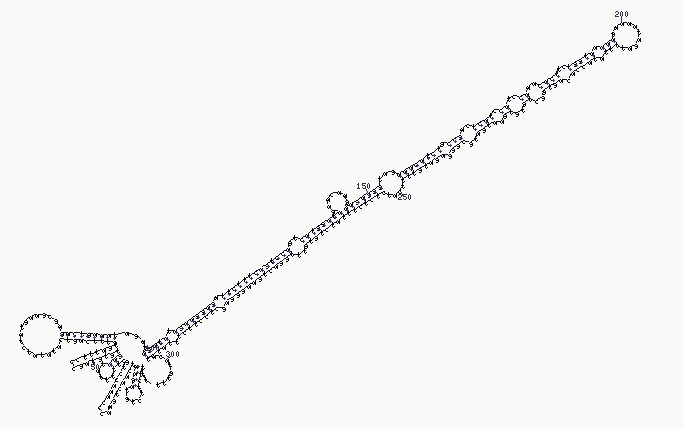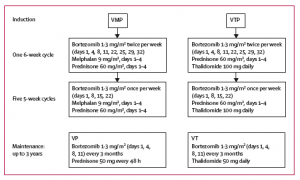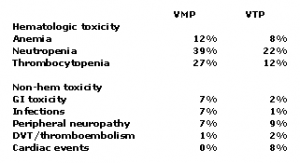Combined VEGF and MET inhibition in some cancers may be better than either alone
A couple of recent controversies in the field of angiogenesis have fascinated scientists and clinicians alike, namely:
- Does VEGF inhibition lead to more aggressive tumours?
- What drives metastases and invasion?
- What is the role of tumour hypoxia in this process?
Data was originally presented in glioblastoma by Rubenstein et al., (2000), showing that anti-VEGF antibody treatment prolonged survival, but resulted in increased vascularity caused quite a stir. Several other groups subsequently demonstrated in preclinical models that VEGF signaling shrinks tumours, but also results in increased invasion and metastases (see Casanovas et al., (2005), Ebos et al., (2009), Paez-Ribes et al., (2009), for examples).
The mechanism for this process, however, remained elusive. A number of factors have been thought to be contributing, including:
- Vessel pruning
- Hypoxia
- Increased expression of c-MET and/or HGF
The corollary of course, is that once we better understand the underlying biology, we can devise strategies to test new agents in clinical trials. The end result would hopefully be improved outcomes for patients undergoing cancer therapy.
Sennino et al., (2012) performed an elegant series of experiments that were published today in Cancer Discovery and sought to understand the roles of VEGF and c-MET signalling in invasion and metastases by using a variety of VEGF and MET inhibitors in transgenic mouse models of pancreatic neuroendocrine tumours. The paper makes for very interesting reading, which I highly recommend.
Here are some of the highlights:
- Tumours treated with VEGF inhibitors such as an antibody (#AF-493-NA, R&D Systems) or sunitinib tended to shrink, but were more invasive as defined by irregular tumour border and presence of acinar cells.
- Post treatment with VEGF inhibitors, proliferating cells were reduced in the tumour centre compared to control but there were more apoptotic cells compared to the control. This is consistent with what we would expect from anti-angiogenic therapy.
- Interestingly, when looking at mesenchymal markers (eg Snail1, N-cadherin, vimentin) there were stronger bands in Western blots after VEGF therapy. EMT activity is usually a sign of invasion and early metastases in the microenvironment.
- Tumours treated with anti-VEGF agents had fewer blood vessels than control, again consistent with expectations for anti-VEGF therapy. However, the reduced vascularity was also accompanied by more hypoxia and greater levels of HIF-1a.
- c-MET staining was greatest in tumour cells, but not tumour vessels, after VEGF therapy compared with the controls. The latter is reduced as vessel pruning takes place.
- Inhibition of c-MET with PF-04217903 and either sunitinib or the anti-VEGF antibody led to reduction in invasion and tumours with smoother contours, but not greater vascular pruning.
Other experiments were performed with both PF-04217903 and crizotinib (MET inhibitors), as well as cabozantinib, a dual inhibitor of MET and VEGF. When both targets were inhibited together, using either cabozantinib or PF-04217903 plus sunitinib, there was a consistent reduction in invasion and metastases. This also increased with tumour hypoxia and c-MET expression.
What does this data mean?
This is the first paper I’ve come across that convincingly suggests that targeting both VEGF and c-MET simultaneously reduces not only tumour size, but also invasion and metastases, thereby overcoming one of the limitations of treatment with VEGF inhibitors alone.
The work also advances our understanding of the anti-angiogenesic process which involves:
“A complex mechanism involving vascular pruning, intratumoral hypoxia, HIF-1a accumulation, and activation of c-MET in tumor cells.”
As a result, the data also suggest the value in combining VEGF and MET inhibitors with a therapy such as cabozantinib (XL184:
“Inhibition of both signaling pathways by XL184 also reduced tumor growth, invasion, and metastases, and prolonged survival.”
Overall, this was a very nicely put together piece of research and expands our understanding of angiogenesis. It also offers insight into how we can improve clinical strategies with combined VEGF and MET inhibition, which I think we will see more off rather than targeting either pathway alone.
Some of these agents are already approved (e.g. bevacizumab, sunitinib, crizotinib), while several others (MetMAB, tivantinib and cabozantinib) are in phase III clinical trials for various tumour types. It will be interesting to see how dual inhibition develops in the clinic and whether the animal studies can be confirmed in humans. I do hope so.
References:
![]() Sennino, B., Ishiguro-Oonuma, T., Wei, Y., Naylor, R., Williamson, C., Bhagwandin, V., Tabruyn, S., You, W., Chapman, H., Christensen, J., Aftab, D., & McDonald, D. (2012). Suppression of Tumor Invasion and Metastasis by Concurrent Inhibition of c-Met and VEGF Signaling in Pancreatic Neuroendocrine Tumors Cancer Discovery DOI: 10.1158/2159-8290.CD-11-0240
Sennino, B., Ishiguro-Oonuma, T., Wei, Y., Naylor, R., Williamson, C., Bhagwandin, V., Tabruyn, S., You, W., Chapman, H., Christensen, J., Aftab, D., & McDonald, D. (2012). Suppression of Tumor Invasion and Metastasis by Concurrent Inhibition of c-Met and VEGF Signaling in Pancreatic Neuroendocrine Tumors Cancer Discovery DOI: 10.1158/2159-8290.CD-11-0240
Rubenstein JL, Kim J, Ozawa T, Zhang M, Westphal M, Deen DF, & Shuman MA (2000). Anti-VEGF antibody treatment of glioblastoma prolongs survival but results in increased vascular cooption. Neoplasia (New York, N.Y.), 2 (4), 306-14 PMID: 11005565
Casanovas O, Hicklin DJ, Bergers G, & Hanahan D (2005). Drug resistance by evasion of antiangiogenic targeting of VEGF signaling in late-stage pancreatic islet tumors. Cancer cell, 8 (4), 299-309 PMID: 16226705
Ebos JM, Lee CR, Cruz-Munoz W, Bjarnason GA, Christensen JG, & Kerbel RS (2009). Accelerated metastasis after short-term treatment with a potent inhibitor of tumor angiogenesis. Cancer cell, 15 (3), 232-9 PMID: 19249681
Pàez-Ribes M, Allen E, Hudock J, Takeda T, Okuyama H, Viñals F, Inoue M, Bergers G, Hanahan D, & Casanovas O (2009). Antiangiogenic therapy elicits malignant progression of tumors to increased local invasion and distant metastasis. Cancer cell, 15 (3), 220-31 PMID: 19249680


